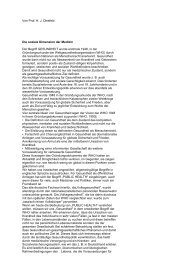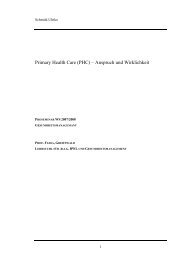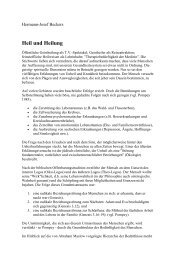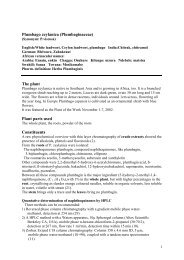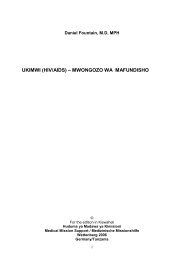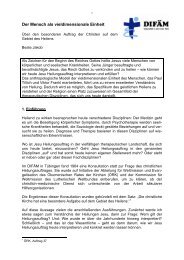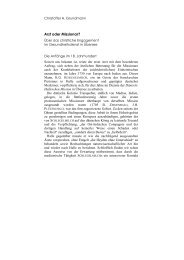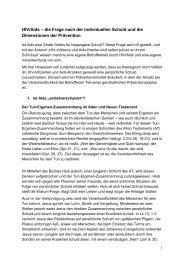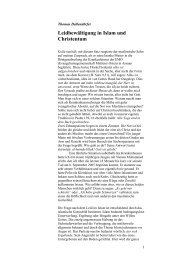(PHCII) - MMH/MMS
(PHCII) - MMH/MMS
(PHCII) - MMH/MMS
You also want an ePaper? Increase the reach of your titles
YUMPU automatically turns print PDFs into web optimized ePapers that Google loves.
Nigeria reported that the community was knowledgeable about hemorrhage in pregnancy<br />
and delivery, however because of the inability to recognize early warning signs they<br />
continued with traditional treatment even when clear evidence of danger existed<br />
(Chiwuzie et al 1995).<br />
Mothers have a tendency to believe that, the more they deliver the less the complications<br />
and hence the less need to deliver in health facility. The TDHS (1996) discovered that in<br />
overall 45% of births were delivered in a health unit, while about half of the births were<br />
delivered at home. The proportion of births delivered in a health unit decreases with the<br />
mothers parity.<br />
A similar study in Mongachi Malawi by Godfrey and Margaret (1996) reported that<br />
many deliveries which took place at home, were either primegravide or grand<br />
multiparous. Although the reasons given for not being attended or being attended by non-<br />
trained personnel during delivery appeared genuine, the risks taken by the grand<br />
multiparas remained disturbingly high. These women who take the trouble to attend<br />
antenatal clinics, among them, they were assumed to have been motivated to use the<br />
health facilities.<br />
The influence of distance cannot be underscored. WHO (1986), Studies done in Cuba,<br />
Egypt, Indonesia, Jamaica and Turkey on maternal mortality demonstrated that maternal<br />
complication rates are increased in areas where women are likely to arrive in the hospital,<br />
in a serious condition. This includes distance to the health facility and in adequate action<br />
by medical personnel. On the other hand Godfrey et al (1996) reported that among<br />
reasons given by mothers for not delivering in health units was distance to the health unit.<br />
Eighteen percent (18%) of the respondents in this study most of them primegravida and<br />
grand multiparas had their confinement at home.<br />
7




